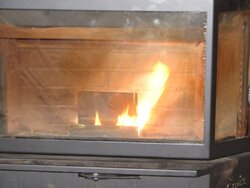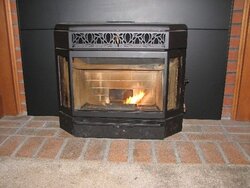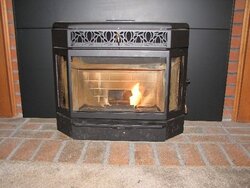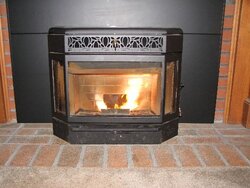I purchased a St. Croix York fireplace insert and have been using it for about 6 weeks now. I am using Warm Front pellets by New England Pellets. My chimney is about 35' tall. I clean the ash pans and vacuum the stove daily. The damper setting is about 90% closed, as is recommended in the manual, although I have tried various positions to make it work better. It runs on heat level #3 full time, 24/7. My problem is I am not getting enough heat. The room it is installed in (240 sq. ft.) is around 75 in front of the stove, 15' away across the room it's 68, and 20' away in the next room it's 60. The only way I can keep my first floor warm is to use my oil heating system. The first floor is around 1,000 sq. ft. with a relatively open floor plan. The second floor gets no benefit from the stove. My flame is very lopsided, about 4" tall on the left, nothing in the middle, and about 1" on the right, so I do not get that "fan pattern" flame. I have tried turning the heat level up with no change. The dealer is not sure what the problem is, initially feeling it was the pellets. I have tried other kinds of pellets, currently Lignetics, but no matter what I am getting no more heat out of this pellet stove that I got from having a regular fire in the fireplace, but at considerably more cost. For the amount of heat I get from the pellet stove, I could have just bought a cord of wood since I am using just as much oil in order to keep my house warm. Does anyone have any experience with the York stove, and have any ideas on the problem??
JB
JB





